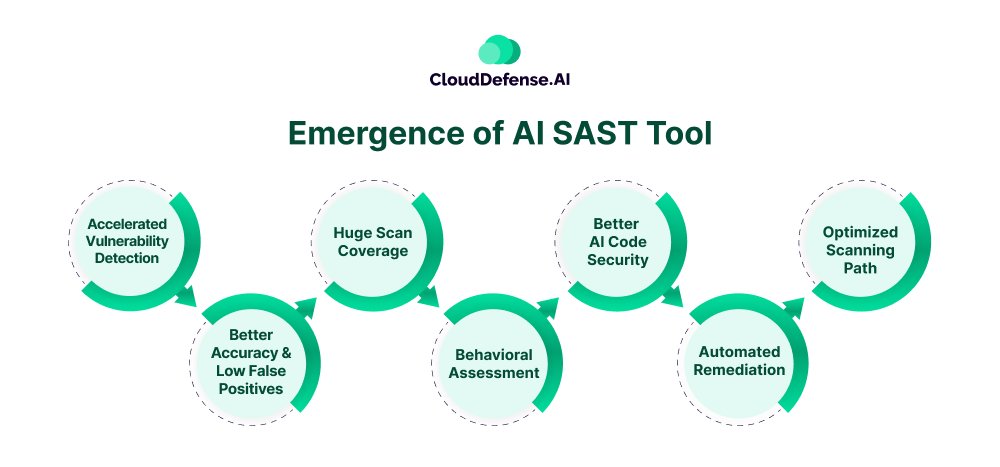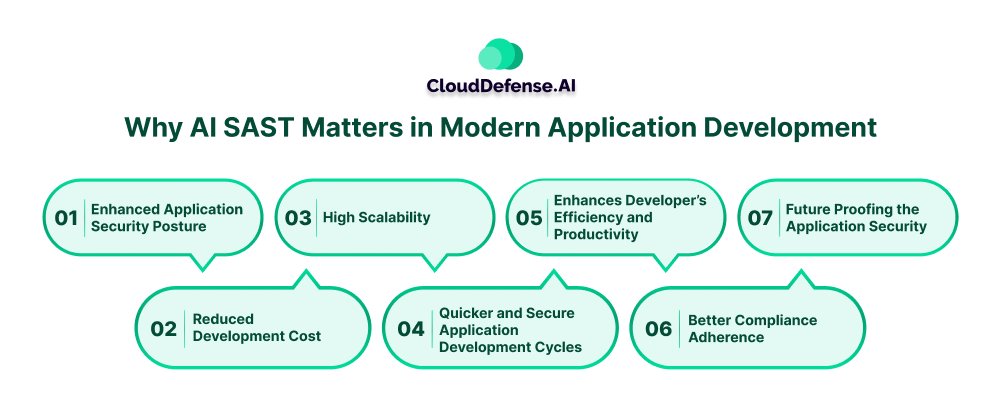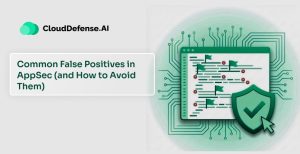What is AI-SAST and Why It Matters
As organizations are moving towards the “shift left” approach, identifying and fixing vulnerabilities at the beginning of SDLC is becoming a top priority for developers. Static Application Security Testing tools play a vital role in prioritizing security at the earliest, helping organizations maintain high development efficiency and productivity.
However, in today’s development world, millions of codes are being written and committed every day. Traditional SAST tools are failing to cope with the modern secure development process. Thus, AI SAST has stepped into the development world- helping organizations with high efficiency and speed. The arrival of AI SAST is already transforming the developer’s approach towards application security and bringing a new era. We will take a detailed look at AI SAST and why it matters.
Traditional SAST and Why It is Struggling?
Static Application Security Testing (SAST) is an application security tool that assesses an application’s codebase or source code without executing it. It is based on a white box testing process that detects vulnerabilities at the earliest in the SDLC. It scans the codebase against known vulnerable code patterns, vulnerability signatures, and common coding errors, and alerts them to the developers.
This AppSec tool holds the ability to highlight the line of code that can give rise to specific vulnerabilities. Developers use this tool to safeguard the application against vulnerabilities like cross-site scripting, SQL injection, and hardcoded codes.
Issues with Traditional SAST

Despite SAST serving as a key AppSec tool for modern application development, it is unable to cope with the complexities of modern application development. The main issues with these traditional tools:
-
- Based on Traditional Approach: A major downside of SAST is that it is based on a traditional approach of utilizing vulnerable patterns and keywords to identify vulnerabilities. It mostly looks for malicious signatures and common errors in the codebase. The rule-based vulnerability detection approach simply doesn’t cut it anymore in the modern application development process.
-
- High False Positive: Since traditional SAST identifies vulnerabilities based on strict policies and rules, it often flags codes that aren’t vulnerable. This leads to a huge number of false positives.
-
- Lack of Code Context: SAST takes white box testing where they assess a code without executing it. Thus, it lacks the context awareness of business logic or application behavior. As a result, this tool often flags codes that aren’t vulnerable.
-
- Lengthy Scans: This tool holds the proficiency to perform complete scanning of the codebase. However as the codebase is getting complex and huge, the scanning process is getting lengthy. The time-consuming scans are not only affecting the productivity of the developers but also slowing the application development process.
-
- Ignore Complex Issues: Modern securities threats are evolving rapidly and it introduces complex issues in the codebase, especially with AI codes. SAST often ignores or is unable to detect those security issues and this leads to vulnerabilities going unresolved.
Emergence of AI SAST Tool

AI SAST tool serves as the next generation AI static analysis tool that is streamlining the process of how SAST scans codebase. It is a game-changer approach that utilizes AI and machine learning in SAST to enhance its capability.
The AI SAST tool doesn’t fully rely on predefined rules and policies, rather it utilizes various LLMs, and vulnerability databases to identify vulnerabilities. As a result, it provides a better, more efficient, and accurate approach to identifying vulnerabilities in code. Most importantly, these security tools can understand the context of code and business logic, providing a better and more effective analysis.
It holds the capability to identify complex vulnerabilities and malicious patterns that traditional SAST tools might not detect. This type of security tool with AI for code security is always learning from vast codebases, remote libraries, patterns, and datasets. This enhances the capacity and contextual awareness of the tool.
An AI-powered static application security tool comes with numerous capabilities and advantages. The integration of AI and machine learning in SAST offers developers with:
-
- Accelerated Vulnerability Detection: The introduction of AI SAST in the IDE and CI/CD pipelines accelerates the vulnerability detection process. The AI static analysis of codes not only becomes faster but also more efficient, improving the productivity of the development process.
-
- Better Accuracy and Low False Positives: The AI SAST is trained with huge code datasets and vulnerability lists. Plus, they are constantly training from available codebase and third-party libraries. This enables it to understand the context of code and determine which threats are genuine. Thus it is able to enhance the accuracy of detection and reduce the false positives.
-
- Huge Scan Coverage: The integration of AI in the SAST tool helps it to utilize Intelligent Code Analytics that enhances the scan coverage of the tool. ICA comes with the proficiency to automatically identify unique patterns, and new APIs, and assess all the existing third-party frameworks. As a result, it is able to identify possible security impacts from every component.
-
- Behavioral Assessment: The addition of AI and machine learning in SAST expands its capability and helps it understand how an application would behave with the specific code. AI SAST leverages dynamic behavioral analysis to assess applications. Understanding the behavior enables the tool to identify malicious patterns and variations that might lead to security threats.
-
- Better AI Code Security: With the massive rise in the use of Cursor, Windsurf, and AI coding assistance, it has become a necessity for organizations to secure all AI codes. This AI static analysis tool can uncover vulnerabilities that AI code often inherits from its training model and lead to severe impact once deployed.
-
- Automated Remediation: Some advanced AI SAST tools can perform automated and context remediation suggestions. These code-fix suggestions are highly useful for developers. It provides them with actionable insight into the vulnerability of the code and helps them easily fix the issue. Thus, it enhances the vulnerability patching process and reduces the burden.
-
- Optimized Scanning Path: When it comes to scanning codes, AI helps SAST to intelligently scan codes that can possibly carry vulnerabilities. It makes the decision based on recent modifications, association with malicious components, or previous patterns. This helps in identifying complex patterns and reducing the scan time.
Why AI SAST Matters in Modern Application Development

AI SAST is no more a concept or an added feature. It has become a primary AppSec tool that is integrated into the modern application development process. The gradual incorporation of AI SAST has implications on business and how developers secure code:
-
- Enhanced Application Security Posture: AI SAST offers enhanced accuracy and vulnerability detection capabilities. This capability is helping developers to identify and remediate a large number of security flaws- leading to better security posture. Identifying crucial vulnerabilities at the earliest also helps organizations reduce the chances of security breaches.
-
- Reduced Development Cost: Incorporation of AI for code security servers as a cost-effective solution in modern application development. It is much more cost-efficient than manual testing as it speeds up the security testing process.
-
- High Scalability: Automating the SAST process with AI benefits developers with high scalability. Modern AI SAST tools can efficiently scale to handle complex and massive codebases without showing any lag. This helps large-scale enterprises to efficiently adopt application security testing at the beginning without hampering productivity.
-
- Quicker and Secure Application Development Cycles: Nowadays, high-speed application development is a priority. AI SAST through its quicker and more accurate vulnerability scans and remediation suggestions helps organizations for faster application delivery. It significantly reduces the security bottleneck by enabling a shift left approach and ensuring all the vulnerabilities are remediated at the earliest.
-
- Enhances Developer’s Efficiency and Productivity: With AI and machine learning in SAST, developers are able to get real-time security feedback and commit codes accordingly. It is helping developers to adopt secure coding practices and prioritize alerts. By streamlining the security workflow, it enables developers to focus mostly on the development process.
-
- Better Compliance Adherence: Another huge implication of AI SAST is that it helps the organization stay compliant with regulatory frameworks that require strict application security. It enables organizations to efficiently meet specific security requirements without hampering the speed.
-
- Future Proofing the Application Security: With time, the codebase is getting more complex. Vulnerabilities are also evolving and malicious actors are getting more sophisticated with their process. AI SAST is providing an evolving and intelligent application security tool that is helping organizations eliminate evolving security threats.
Future of AI SAST
AI SAST is revolutionizing how organizations look at the security of code during application development. It is making application security testing smarter and faster while maintaining effectiveness. This tool eliminates the limitation of traditional SAST and provides a robust AppSec solution to organizations to fight against evolving security threats.
Many modern AI SAST tools are making a mark in the industry but one tool that stands out is QINA Clarity. It is a smart and powerful AI SAST tool that is making a mark with its incredible vulnerability detection capability and reducing false positives. QINA Clarity works in 4 stages and integrates seamlessly in CI/CD pipelines. It is empowering organization AI-powered vulnerability detection with focus on real threats while ensuring faster dev cycle. Quickly get your hands on QINA Clarity and safeguard your application code before it leads to any major issue.







